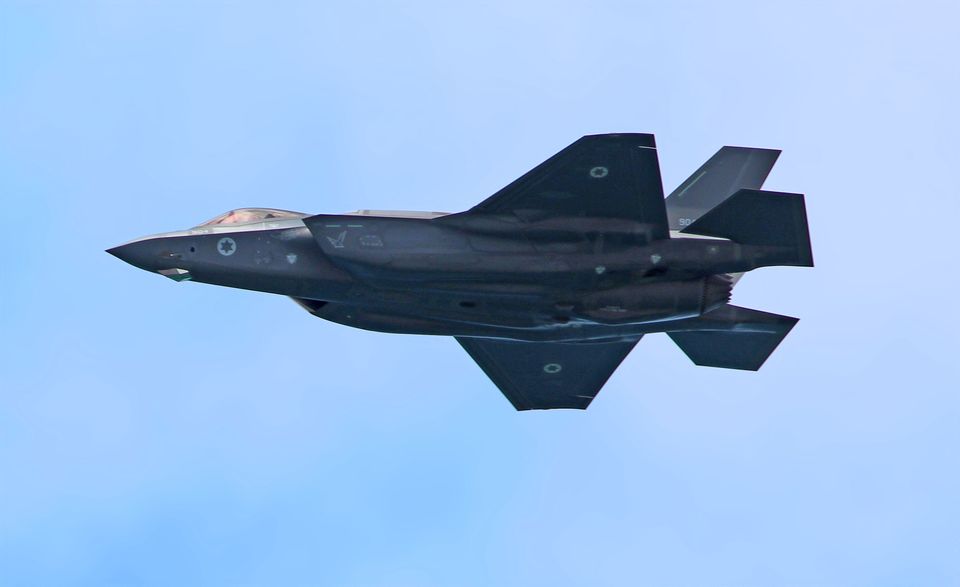
The Legality of Israeli Airstrikes in Syria
Since the beginning of the Syrian conflict, Israel has regularly conducted airstrikes on Syrian government troops, Iran-backed forces, and Hezbollah fighters. The increased frequency and locations around Syria at which these strikes have occurred begs the question of the legality of Israel’s actions in terms of international law. The strikes display Israel’s ability to navigate legal ambiguities and act with impunity in the Syrian context, not only as an occupying power over the Golan Heights, but also when dealing with perceived threats from its neighbors more broadly, namely Iran.
Determining the relevant law
The legality of an airstrike first depends on whether the strike occurred during a time of peace or during an active armed conflict. Jus ad bellum is the law governing the conditions under which states may resort to the use of armed force prior to the start of a conflict. The general rule is that a state must have just cause for using violent force. But the definition of “just cause” is elusive. In terms of pre-emptive strikes, for example, “many believe that states are justified…in cases where there is a sufficient threat, and failure to exercise military force ‘would seriously risk their territorial integrity or political independence.’”
In contrast, jus in bello regulates the conduct of parties engaged in an active armed conflict. An armed conflict arises if there is armed violence between states and/or groups. Generally, when a state is involved, the threshold for establishing an armed conflict is met when one state uses force against another state or a non-state armed group. The non-state armed group must have armed forces that are organized, making them active parties to the conflict. Partial or total military occupation constitutes an armed conflict. However, neither the Charter of the United Nations nor the Geneva Conventions provide an exact definition of “armed violence,” thus it is unclear whether the law of armed conflict applies to “low-intensity military confrontation, such as border incidents or armed skirmishes” or whether an intensity threshold should trigger the law’s application, as suggested by the International Criminal Tribunal for the Former Yugoslavia.
Pursuant to the laws of armed conflict, conduct is considered fair when four principles are respected: (i) military necessity, (ii) distinction, (iii) proportionality, and (iv) avoiding unnecessary suffering. Taken together, these principles stipulate that military targets are considered lawful targets of attacks, not civilians or civilian property, and collateral damage caused by attacks must be proportional to military advantage. Further, military force should avoid using excessive violence against an opponent.
Within the Golan Heights, which can be labeled an armed conflict given the ongoing occupation, Israeli airstrikes in accordance with the four principles could be permissible. Outside of the Golan Heights, however, the requirements for an active armed conflict are not triggered. Rather, jus ad bellum is the applicable legal regime.
Israeli attacks beyond the Golan Heights
On May 13, Israeli missiles launched near Banyas struck targets in Masyaf outside of Hama, leading to five deaths, seven injuries, and forest fires. Reports suggest that the strikes were aimed at weapons depots belonging to pro-Assad forces. Several weeks earlier, Israeli airstrikes hit five sites near Damascus and killed nine combatants associated with the Syrian military and an Iran-backed militia. The attack came hours after the Israeli military confirmed that an Israeli drone crashed on the Syrian side of the border.
These actions represent the tit-for-tat game played by Israel and its adversaries in the area beyond the Golan Heights which is consistent with the status quo; typically, Israel’s opposition to Iranian interference in regional politics makes Iran-backed parties its primary target in Syria to weaken the groups’ military capacity. The Chief of Staff of the Israel Defense Forces, General Aviv Kochavi, stated that Israel struck more than 500 Iranian-linked targets in Syria in 2020 alone, and that “[t]he Iranian entrenchment in Syria is in a clear slowdown as a result of IDF activity, but we still have a long way to go to complete our goals.”
Application of jus ad bellum
While civilians and civilian property have inevitably been harmed by Israeli strikes, the plurality of the strikes targeting Hezbollah-backed groups indicate a fairly limited strategic plan to curtail Iranian involvement in the Syrian conflict and regional politics. Yet Israel has not publicly provided justification for the vast majority of its strikes, aside from its own national security interests and an indeterminate threat from Iran-back groups in Syria. Rather, the IDF is typically silent on such matters and the immediate danger posed by the threats remains unclear. This calls into question whether Israel’s actions meet the elusive “just cause” threshold for military necessity or whether the strikes can be rendered down to violations of Syrian sovereignty.
Conclusion
Israeli attacks on the Golan Heights can be justified under the laws of armed conflict given the occupation and active military hostilities. However, the legality of strikes conducted in Syria beyond the Golan is not nearly as clear cut under jus ad bellum because the immediate threat to Israeli national security posed by Hezbollah-backed armed groups in Syria is ambiguous. This casts doubt that there is “just cause” for military action. Given the nature of the conflict in Syria and heightened tensions between both governments, strikes must be assessed on a case-by-case basis.
_____________________________________________________
For more information or to provide feedback, please contact SJAC at [email protected] and follow us on Facebook and Twitter. Subscribe to SJAC’s newsletter for updates on our work